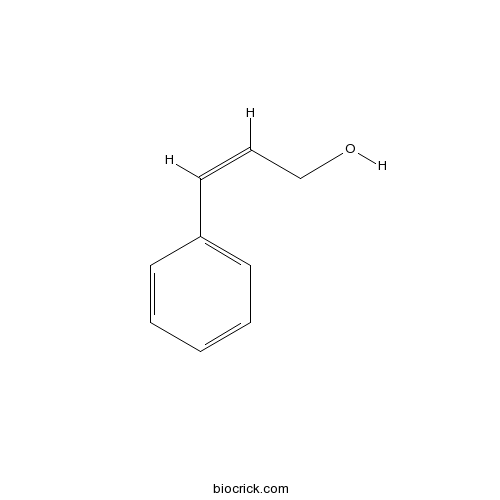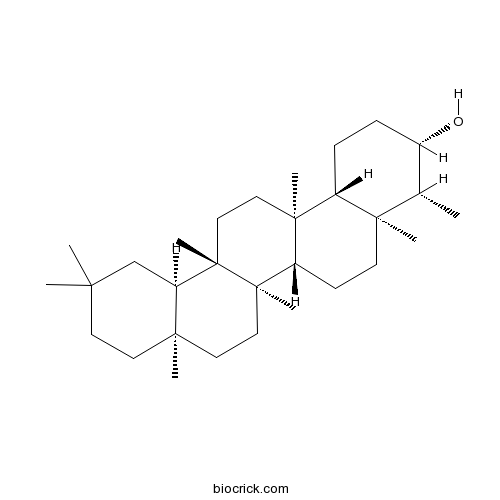Empetrum nigrum var. japonicum
Empetrum nigrum var. japonicum
1. The products in our compound library are selected from thousands of unique natural products; 2. It has the characteristics of diverse structure, diverse sources and wide coverage of activities; 3. Provide information on the activity of products from major journals, patents and research reports around the world, providing theoretical direction and research basis for further research and screening; 4. Free combination according to the type, source, target and disease of natural product; 5. The compound powder is placed in a covered tube and then discharged into a 10 x 10 cryostat; 6. Transport in ice pack or dry ice pack. Please store it at -20 °C as soon as possible after receiving the product, and use it as soon as possible after opening.
Natural products/compounds from Empetrum nigrum var. japonicum
- Cat.No. Product Name CAS Number COA
-
BCN4967
Cinnamyl alcohol104-54-1
Instructions

-
BCN1104
Epifriedelanol16844-71-6
Instructions

-
BCN5570
Hyperoside482-36-0
Instructions

In Vitro and In Vivo Antiangiogenic Activity of Crowberry (Empetrum nigrum var. japonicum).[Pubmed: 27396205]
Crowberry, Empetrum nigrum var. japonicum, is widely used in folk medicine and grows naturally in Korea. Although some constituents and biological activity of Korean crowberry have been examined, there is little detailed information available. In this study, we investigated the effects of ethanol extracts of crowberry (EECB) on the inhibition of angiogenesis, both in vitro and in vivo. The effects of EECB were tested on in vitro models of angiogenesis, that is, tube formation and proliferation of human umbilical vein endothelial cells (HUVECs). EECB exhibited significant inhibitory effects on tube formation of HUVECs in a concentration-dependent manner. In addition, crowberry significantly suppressed the proliferation of HUVECs in a concentration-dependent manner. Furthermore, strong antiangiogenic activity of EECB samples was observed in the in vivo assay using chick embryo chorioallantoic membrane (CAM). These results indicate that crowberry may have potential applications in the prevention and treatment of angiogenesis-dependent human diseases.
Antioxidant, α-glucosidase inhibitory and anti-inflammatory effects of aerial parts extract from Korean crowberry (Empetrum nigrum var. japonicum).[Pubmed: 26980998]
Crowberry (Empetrum nigrum L.) is a wild berry commonly found in the northern hemisphere. Crowberry fruits have been suggested as good resources for functional applications in the cosmetic and pharmaceutical industries, but the high polyphenolic content in crowberry leaves also indicates crowberry aerial parts as potential dietary health supplements. In this study, therefore, the biological activities of the aerial parts of Korean crowberry (E. nigrum var. japonicum) were investigated. Antioxidant activity was measured by three different assays on DPPH free radical scavenging, reducing power, and total antioxidant capacities. Dose-dependent antioxidant activities were exhibited by crude methanol extract and its fractions, suggesting that the crude methanol extract and EtOAc fraction possessed strong antioxidant activities and capacities. In addition, the crude methanol extract and EtOAc strongly inhibited α-glucosidase activity and suppressed the secretion of pro-inflammatory mediator and nitrite oxide from LPS-stimulated RAW 264.7 cells. These findings provide valuable evidence for the potential of such parts as good dietary sources of natural antioxidant, α-glucosidase inhibitory, and anti-inflammatory components, suggesting that using the non-edible parts (e.g., leaves and stems) of crowberry can be a potential natural avenue for improving human health.
Empetrum nigrum var. japonicum Extract Suppresses Ultraviolet B-Induced Cell Damage via Absorption of Radiation and Inhibition of Oxidative Stress.[Pubmed: 23476710]
This study focused on the protective actions of Empetrum nigrum against ultraviolet B (UVB) radiation in human HaCaT keratinocytes. An ethyl acetate extract of E. nigrum (ENE) increased cell viability decreased by exposure to UVB rays. ENE also absorbed UVB radiation and scavenged UVB-induced intracellular reactive oxygen species (ROS) in HaCaT keratinocytes. In addition, ENE shielded HaCaT keratinocytes from damage to cellular components (e.g., peroxidation of lipids, modification of proteins, and breakage of DNA strands) following UVB irradiation. Furthermore, ENE protected against UVB-induced apoptotic cell death, as determined by a reduction in the numbers of apoptotic bodies and sub-G1 hypodiploid cells, as well as by the recovery of mitochondrial membrane potential. The results of the current study therefore suggest that ENE safeguards human keratinocytes against UVB-induced cellular damage via the absorption of UVB ray and scavenging of UVB-generated ROS.
Empetrum nigrum var. japonicum extract suppresses γ-ray radiation-induced cell damage via inhibition of oxidative stress.[Pubmed: 21213406]
The ethylacetate fraction of Empetrum nigrum var. japonicum (ENE) was shown to reduce intracellular reactive oxygen species (ROS) generated by γ-radiation and activate antioxidant enzymes, such as superoxide dismutase (SOD), catalase (CAT), and gluthathion peroxidase (GPx). ENE protected cells against radiation-induced cellular DNA damage, membrane lipid peroxidation, and protein modification, which are the main points of radiation-induced damage. In addition, ENE recovered cell viability by inhibiting apoptosis after cells were treated with radiation. ENE treatment also reduced γ-radiation induced Bax, and caspase 9 and 3 expression in irradiated cells. However, irradiated cells with ENE recovered Bcl-2 expression, which was reduced by radiation. This anti-apoptotic effect of ENE was due to the inhibition of mitogen-activated protein kinase kinase-4 (MKK4/SEK1)-c-Jun NH(2)-terminal kinase (JNK) cascades induced by γ-radiation. In summary, these results suggest that ENE protects cells against γ-radiation-induced oxidative stress via the reduction of ROS and attenuation of apoptosis.
Risk reduction of ethyl acetate fraction of Empetrum nigrum var. japonicum via antioxidant properties against hydrogen peroxide-induced cell damage.[Pubmed: 20077224]
Reactive oxygen species (ROS) produce damage to all major cellular constituents. The antioxidant properties of the ethyl acetate fraction of Empetrum nigrum was assessed against hydrogen peroxide (H(2)O(2))-induced cell damage. Empetrum extract was found to scavenge (1) intracellular ROS in cell system, (2) hydroxyl radicals generated by the Fenton reaction (FeSO(4) + H(2)O(2)), and (3) superoxide radicals generated by xanthine/xanthine oxidase in a cell-free system as detected by electron spin resonance (ESR) spectrometry. Cell damage was produced by H(2)O(2) treatment as evidenced by DNA damage, lipid peroxidation, and increased protein carbonyl formation; however, Empetrum extract prevented H(2)O(2)-induced damage to these parameters. Empetrum extract increased viability of Chinese hamster lung fibroblast (V79-4) cells exposed to H(2)O(2), as evidenced by decreased apoptotic nuclear fragmentation, and lower sub G(1) cell population. Further, Empetrum extract restored the cellular antioxidant enzyme activities of superoxide dismutase (SOD), catalase (CAT), glutathione peroxidase (GPx), and heme oxygenase-1 (HO-1), which were reduced by H(2)O(2) treatment. In conclusion, Empetrum extract protected cells against H(2)O(2)-induced cell damage via antioxidant properties by scavenging ROS and enhancing antioxidant enzyme activities.


